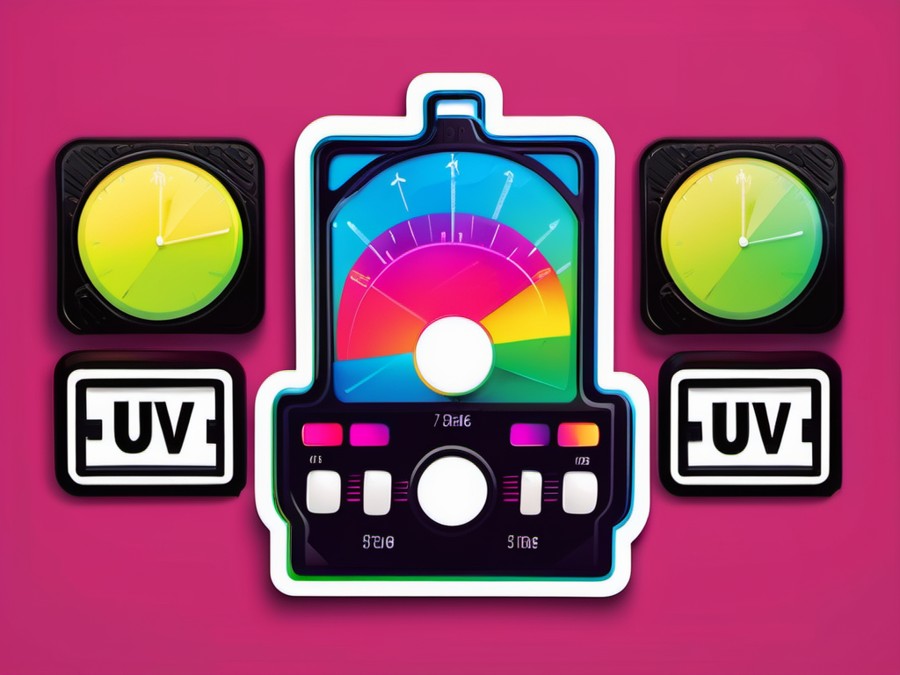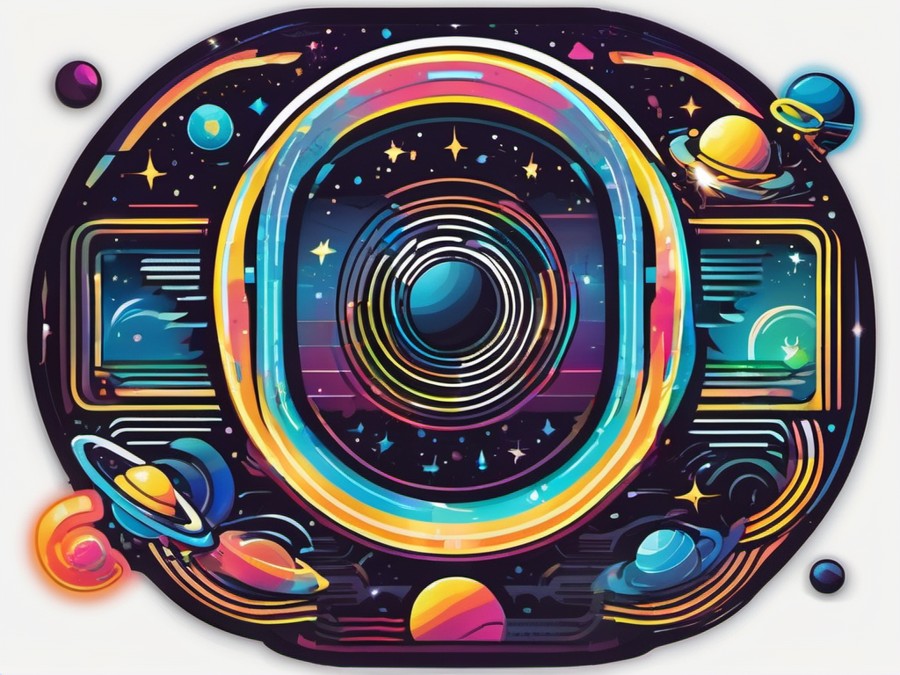· Charlotte Will · Light Meters & Accessories · 10 min read
What are the Different Types of Light Meters?
Learn about the different types of light meters and how to choose the right one for your photography needs. Explore incident, reflective, and spot meters, plus tips for using them effectively to achieve perfect exposures.

You’ve got your camera, lenses, and tripod all set up. But have you thought about the most crucial tool for capturing that perfect exposure? Light meters are indispensable in photography, whether you’re shooting film or digital. But with so many types available, how do you choose the right one? Let’s dive into the world of light meters and explore the different types you can find on the market today.
Introduction to Light Meters in Photography
Before we delve into the various types, let’s understand what a light meter is and why it’s essential. A light meter is a device used to measure the amount of light reflected from or passing through a subject. This measurement helps photographers determine the correct exposure for their shots, ensuring that photographs are neither too dark nor too light.
Why Use a Light Meter?
In today’s digital age, cameras come with built-in light meters. So why bother with a separate device? Built-in meters can be fooled by extreme lighting conditions, leading to inaccurate exposures. A dedicated light meter provides more reliable readings, especially in tricky situations like backlit subjects or when using flash.
Understanding the Basics
How Does a Light Meter Work?
Light meters measure light intensity, typically in units of lux or foot-candles. When you point the meter at your subject, it calculates the exposure by comparing the measured light to a predetermined standard. Modern meters use photoelectric cells or silicon photodiodes to convert light into electrical signals, which are then interpreted by the meter’s circuitry.
The Difference Between Incident and Reflective Light Meters
Light meters can be categorized into two main types based on how they measure light: incident and reflective.
- Incident meters measure light falling on the subject.
- Reflective meters measure light reflected by the subject.
Each type has its unique uses and advantages, which we’ll explore in more detail below.
Different Types of Light Meters
Handheld Light Meters
Handheld light meters are the most common type. They are versatile and can be used with various cameras and lenses. To use one, you simply point the meter at your subject, press the button, and check the reading. These meters are particularly useful for portrait photography, where you need to ensure your subject is well-lit.
How to Use Handheld Light Meters
- Point the meter at your subject.
- Press the button to take a reading.
- Adjust your camera settings based on the meter’s recommendations.
Check out our article on the best accessories for light meters to enhance your handheld meter’s functionality.
Best Handheld Light Meters on the Market
- Sekonic L-858D: A top choice for professional photographers, offering precise measurements and a range of features.
- Kenko KFM-1100: An affordable option with reliable performance, perfect for beginners.
- Gossen Starlite 2: Known for its durability and ease of use, this meter is great for both studio and outdoor photography.
Incident Light Meters
Incident light meters measure the amount of light falling on the subject, providing a more accurate reading in challenging lighting conditions. These are particularly useful when using flash or in situations with mixed lighting.
What Are Incident Light Meters?
Incident meters come with a white dome that diffuses the light, allowing for more accurate readings. This feature makes them invaluable when dealing with harsh or uneven lighting.
When to Use an Incident Light Meter
- When shooting with flash.
- In situations with mixed lighting (e.g., sunlight and artificial light).
- For landscape photography where the light may vary across different parts of the scene.
Reflective Light Meters
Reflective light meters measure the amount of light reflected by the subject. These are more common in built-in camera meters but can also be found as standalone devices. They are useful for general photography where the subject is evenly lit.
How Reflective Light Meters Differ from Incident Meters
Reflective meters are more affected by the subject’s color and reflectivity. For example, a dark object will absorb more light, leading to an underexposed image if the meter reading is not adjusted.
Situations Where Reflective Light Meters Are Ideal
- General photography where the lighting is consistent.
- When shooting in controlled environments like studios.
- For subjects with neutral colors that reflect light evenly.
Spot Light Meters
Spot light meters are designed to measure light in a very narrow area, typically just 1-2 degrees. This precision makes them ideal for metering specific parts of a scene, such as the face of a subject in a portrait.
What Makes Spot Light Meters Unique?
The small measurement area allows photographers to focus on the most critical part of the image, ensuring that it is properly exposed while ignoring less important areas.
Use Cases for Spot Light Meters
- Portrait photography to ensure the subject’s face is well-exposed.
- Architectural photography where specific details need to be properly lit.
- Wildlife photography to meter the animal’s face or eyes.
Flash Light Meters
Flash light meters are specialized tools designed to measure the output of photographic strobes or flashes. These meters are crucial for studio photography where precise flash measurements are essential.
How Flash Light Meters Work
Flash meters have a sensor that can detect the brief, intense light output of strobes. This feature allows photographers to accurately measure and adjust flash settings for consistent exposures.
Benefits of Using a Flash Light Meter
- More accurate readings compared to handheld or built-in meters.
- Consistency in flash exposure across multiple shots.
- Better control over the lighting setup, leading to more professional results.
Digital vs Analog Light Meters
Light meters come in both digital and analog varieties. Each has its advantages and disadvantages, depending on your needs and preferences.
Pros and Cons of Digital Light Meters
- Pros: Easier to read, more features, better battery life.
- Cons: Dependent on technology, may become outdated faster.
Advantages of Using Analog Light Meters
- Simple and reliable.
- No batteries required (most analog meters are mechanical).
- Often more durable and less prone to failure.
Choosing the Right Light Meter for Your Needs
Best Light Meters for Photography
Choosing the right light meter depends on your specific needs and the type of photography you do. Here are some top picks for different types of photographers:
- Professional Photographers: Sekonic L-858D or Gossen Starlite 2.
- Amateur Photographers: Kenko KFM-1100 or Sekonic L-358.
- Studio Photographers: Sekonic Flashmate L-478DR-U or Gossen Luna-Pro S.
Light Meters for Video Production
Video production requires consistent lighting and accurate metering. Here’s what to look for in a light meter for video:
- Accuracy: Essential for capturing the correct exposure.
- Ease of Use: Quick readings are crucial in fast-paced video shoots.
- Durability: Withstands the rigors of frequent outdoor use.
Best Light Meters for Film Photography
Film photographers have unique needs, as the dynamics of film can be very different from digital. Here are some recommendations:
- Sekonic L-358: A compact and reliable meter, great for on-the-go film photographers.
- Gossen Sixtomat F2: Known for its accuracy and durability, perfect for studio work.
- Weston Master III: A classic analog meter that offers simplicity and reliability.
Electronic vs Handheld Light Meters
When choosing between electronic and handheld light meters, consider the following:
- Electronic Meters: More features, easier to read, but dependent on technology.
- Handheld Meters: Simpler, often more durable, and can be used in various conditions.
Calibrating Your Light Meter
Regular calibration of your light meter is essential to ensure accurate readings. Most modern meters have self-calibration features, but some may require professional calibration services to maintain optimal performance.
Popular Light Meter Brands
Sekonic
Sekonic is a leading brand in the world of light meters, known for its precision and reliability. Their products range from basic handheld meters to advanced studio tools, catering to photographers of all levels.
Kenko
Kenko offers affordable and reliable light meters, making them an excellent choice for beginners or those on a budget. Despite their lower price point, Kenko meters provide accurate readings and are easy to use.
Gossen
Gossen is another reputable brand, known for its durable and feature-rich light meters. Their products are popular among professionals and enthusiasts alike, offering a good balance between price and performance.
Other Notable Brands in the Market
- Minolta: Known for their high-quality light meters, often used in professional settings.
- Polaroid: Offers simple and effective light meters, perfect for casual photographers.
- Canon: Provides integrated light meters in their high-end DSLR cameras, favored by many professionals.
Tips for Using a Light Meter Effectively
Basic Techniques for Accurate Readings
- Understanding ISO Settings: Ensure your meter is set to the same ISO as your camera for accurate readings.
- Balancing Aperture and Shutter Speed: Use the meter’s recommendations to adjust your aperture and shutter speed for the correct exposure.
- Considering the Light Source: Different light sources (sunlight, fluorescent, incandescent) have varying color temperatures. Adjust your meter accordingly for the best results.
Advanced Tips for Pro Photographers
- Mastering Challenging Lighting Conditions: Use incident meters for backlit subjects to get an accurate reading of the main lighting.
- How to Measure Tricky Subjects: When dealing with subjects that are significantly lighter or darker than the surroundings, use spot metering to focus on the most important area.
For more tips on accessorizing your light meter, check out our article on the best accessories for light meters.
Common Misconceptions About Light Meters
Debunking Myths About Light Meters
- Myth: Built-in camera meters are sufficient for all situations.
- Reality: While built-in meters are convenient, they can be fooled by extreme lighting conditions, leading to inaccurate exposures.
- Myth: Only professional photographers need light meters.
- Reality: Light meters are invaluable for photographers of all skill levels, helping to achieve consistent and accurate exposures.
- Myth: Digital cameras eliminate the need for light meters.
- Reality: While digital cameras have improved significantly, a dedicated light meter provides more reliable readings in challenging conditions.
Why Every Photographer Needs a Light Meter
A light meter is an essential tool for achieving consistent and accurate exposures. Whether you’re shooting in a studio or outdoors, a light meter helps you capture the perfect shot every time.
Conclusion
Understanding the different types of light meters and their uses is crucial for photographers aiming to achieve consistent and accurate exposures. From handheld meters to specialized flash and spot meters, each type has its unique advantages and applications. Choosing the right meter depends on your specific needs and the type of photography you do. Whether you’re a professional or an amateur, investing in a quality light meter can significantly improve your photography skills and results.
FAQs
What is the best type of light meter for photography?
- The best type depends on your needs and the type of photography you do. Spot meters are great for portraiture, while incident meters excel in mixed or harsh lighting conditions.
How do you choose a light meter for film photography?
- For film photography, consider the dynamics of film and choose a meter that offers precision and consistency. Analog meters are often preferred for their simplicity and reliability.
What is the difference between handheld and reflective light meters?
- Handheld meters measure the overall light in a scene, while reflective meters focus on the light reflected by the subject. Handheld meters are more versatile, while reflective meters provide more accurate readings in specific situations.
Which light meter is better for video production?
- For video production, look for a meter that offers accuracy, ease of use, and durability. Digital meters with advanced features can be particularly useful in fast-paced video shoots.
How often should you calibrate your light meter?
- Regular calibration is essential to maintain accurate readings. Most modern meters have self-calibration features, but professional calibration services may be required for optimal performance over time.
For more insights into photography equipment, explore our articles on the ideal length for tripod legs in different photography settings and what is a ring light flash and why it’s essential for portraits.




